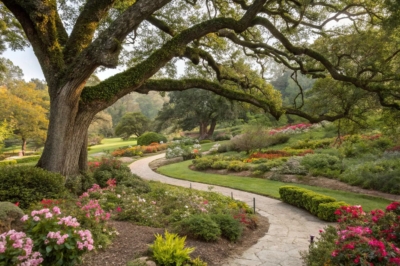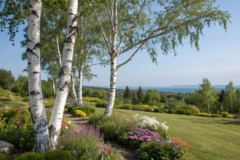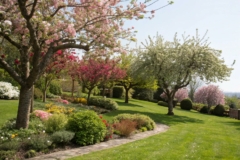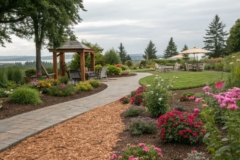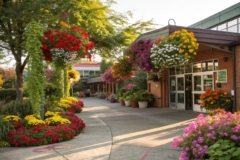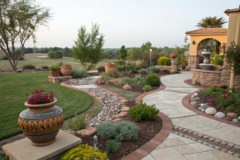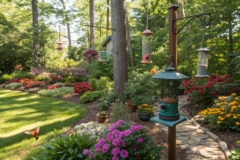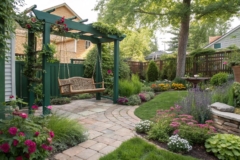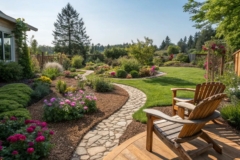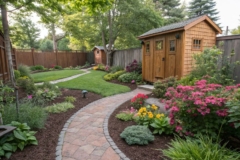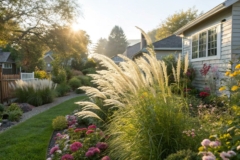1. Experiment with Moss Gardens
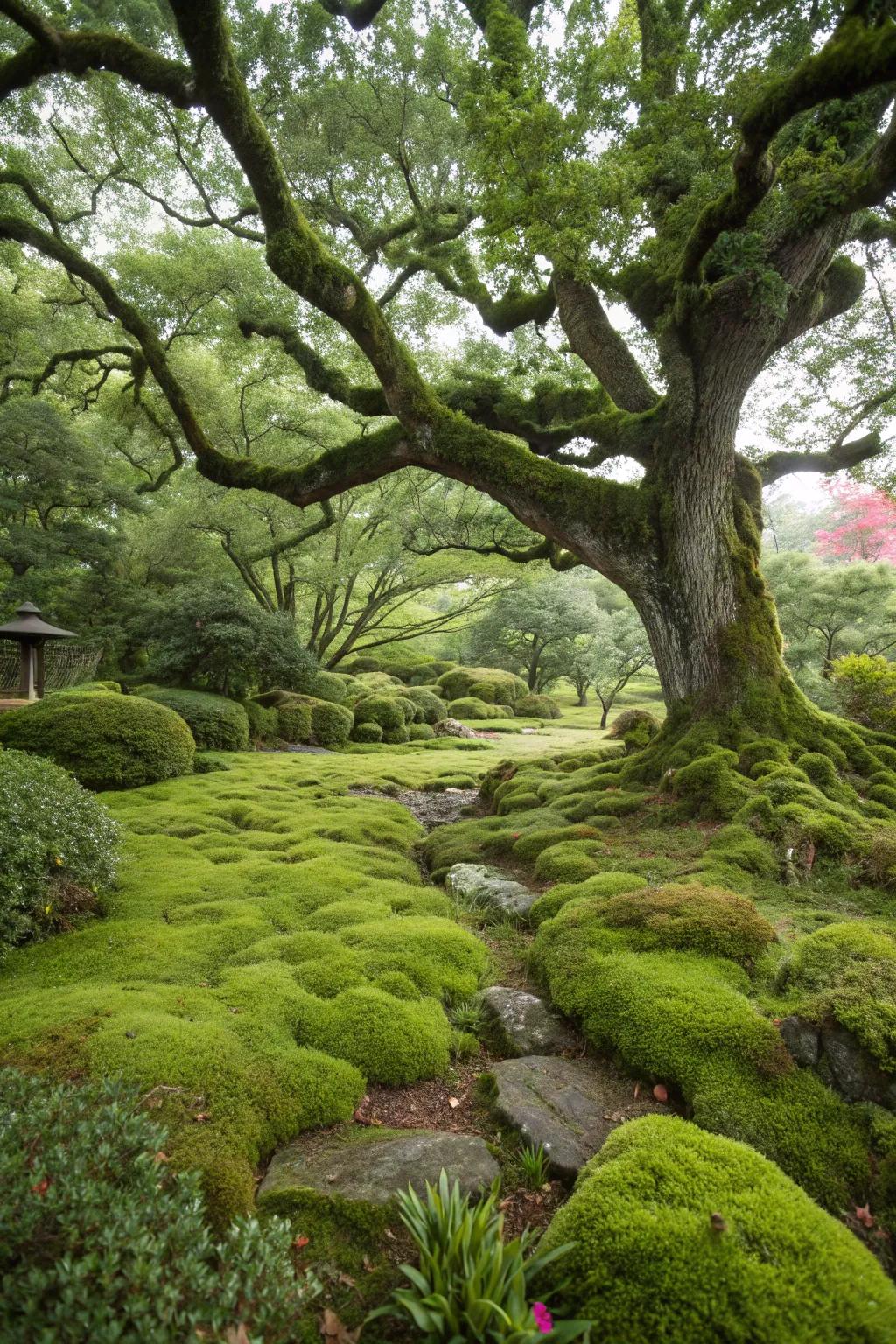
Moss thrives in shady, damp conditions and adds a soft, lush texture. My moss garden under the oak feels like a magical forest floor.
A few things you might like:
- Live Moss for Garden Landscaping: Transform your garden with lush live moss, perfect for creating a magical forest floor.
- Moss Starter Kit: Begin your enchanting moss garden effortlessly with an all-inclusive starter kit. Easy and rewarding!
- Shade and Moss Fertilizer: Boost your moss garden’s growth with specially formulated shade-friendly fertilizers for vibrant greens.
2. Incorporate Stone Pathways
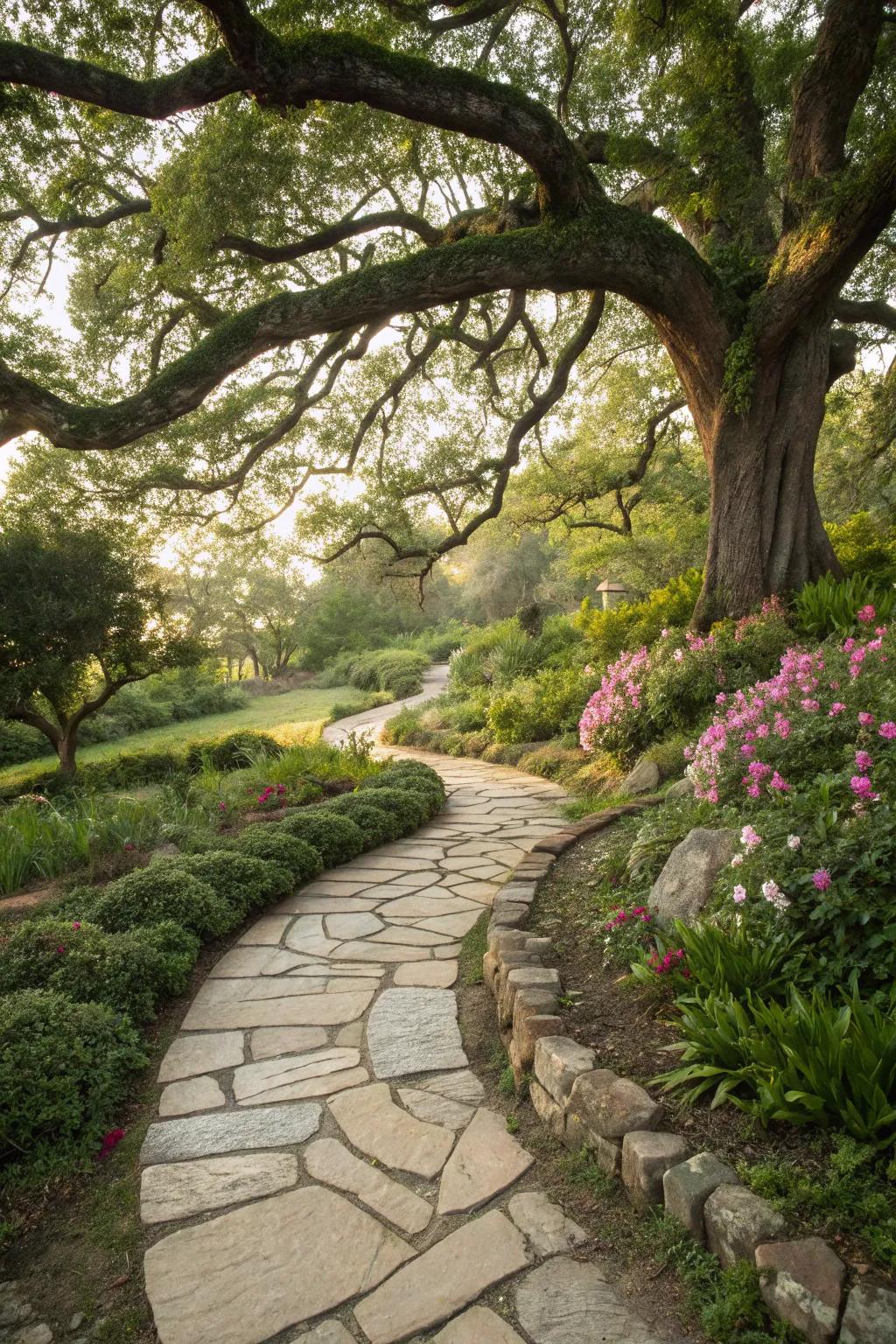
Lay down stone pathways to guide visitors through your oak-shaded garden. These pathways in my backyard have added structure and a touch of elegance.
Maybe worth checking out:
- Natural Stone Pavers: Enhance your garden’s elegance with durable natural stone pavers, perfect for creating charming pathways.
- Landscaping Edging Stones: Define your garden paths with elegant stone edging, adding a neat and structured finish.
- Weatherproof Garden Path Lights: Illuminate your stone path with energy-efficient lights, ensuring safe and attractive evening strolls.
3. Add Vibrant Coral Bells
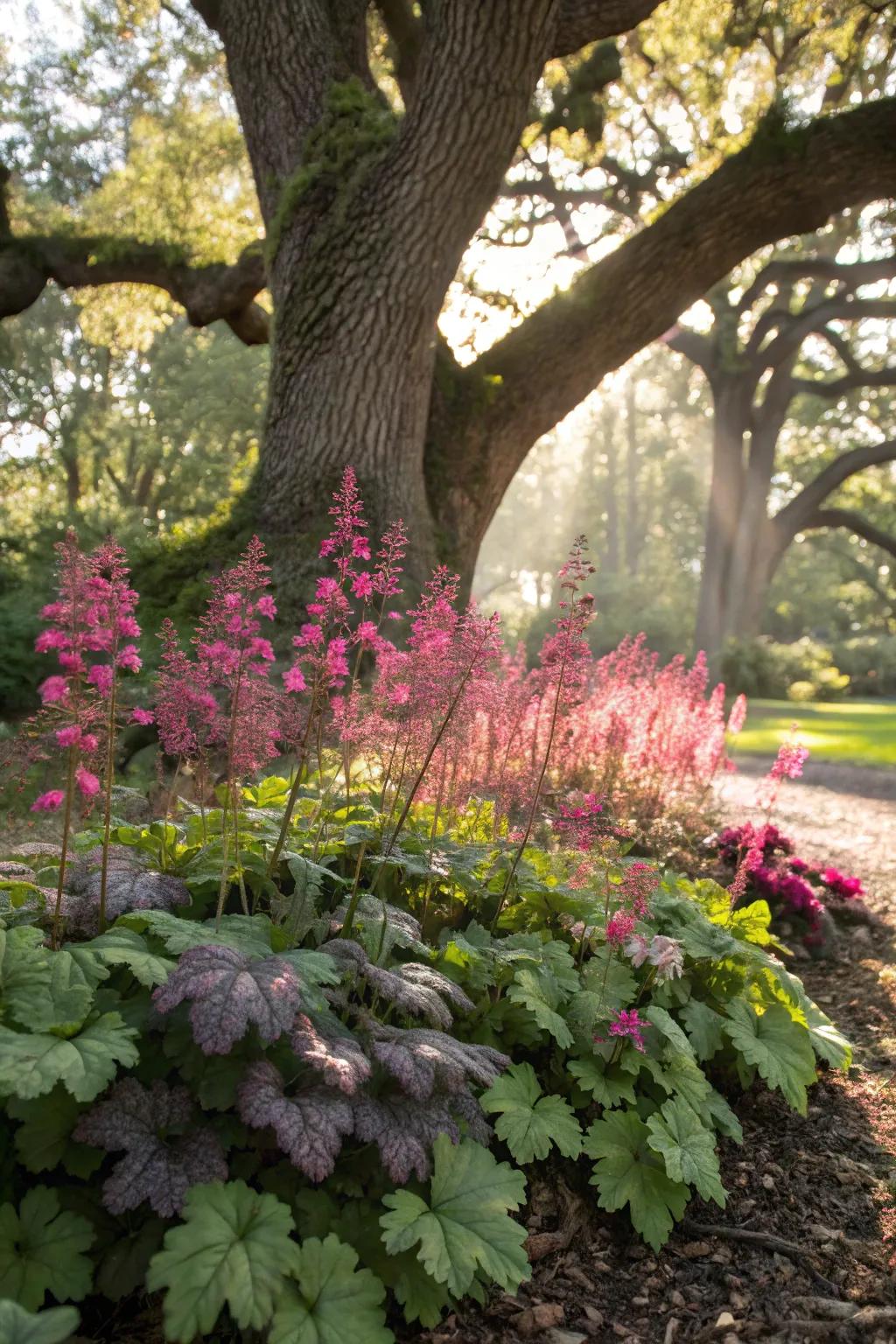
For a pop of color, Coral Bells are a fantastic choice. Their unique foliage and resilience make them a favorite in my own garden under the oak’s dappled shade.
Check these products out:
- Coral Bells Plants: Enhance your garden’s beauty with resilient Coral Bells, perfect for dappled shade spots.
- Shade Garden Soil: Boost plant health by using soil designed for optimal growth in shaded areas.
- Drip Irrigation Kit: Ensure even watering with a drip irrigation kit designed for shaded garden spaces.
4. Try Tapestry Planting
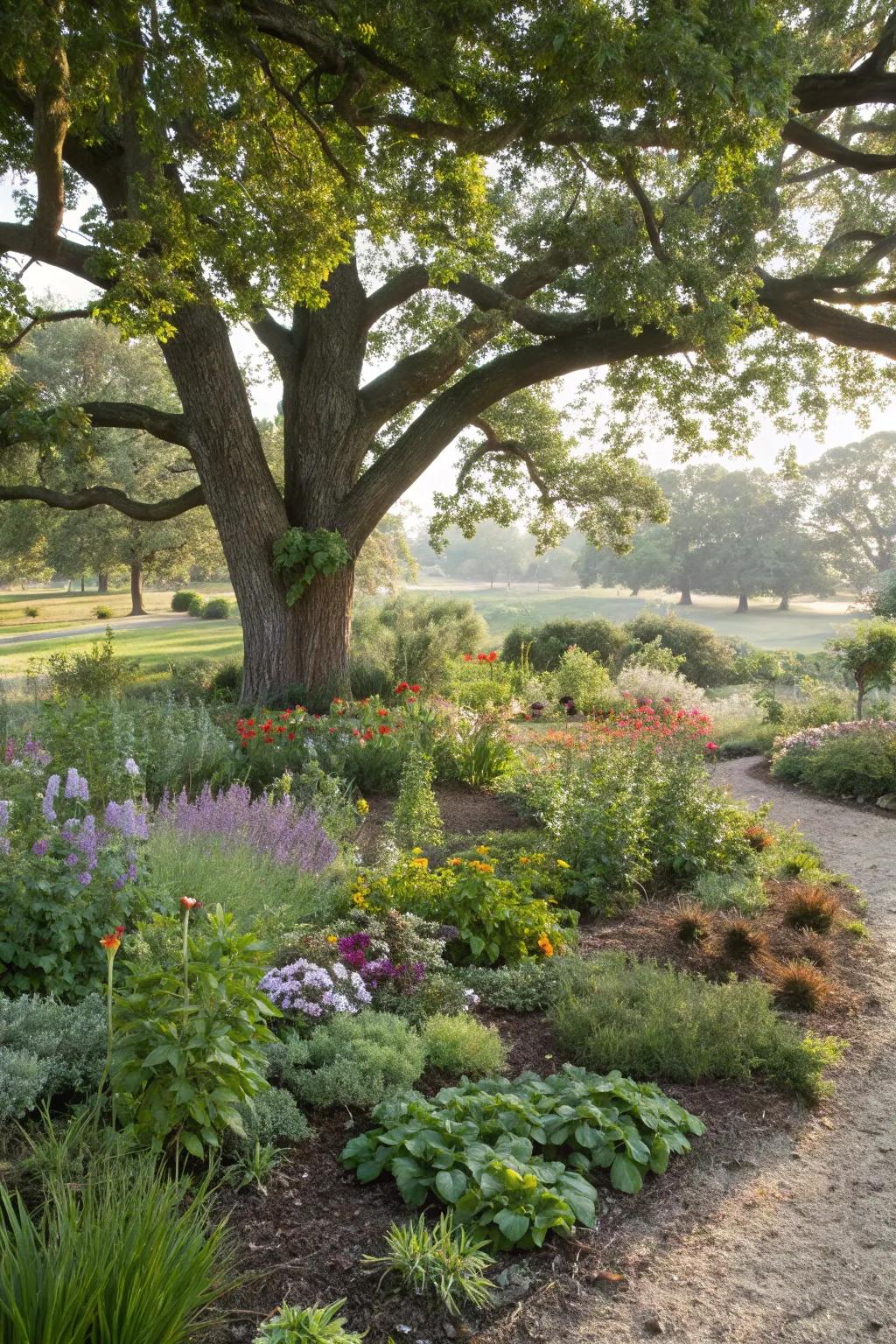
Combine different plants in a tapestry style for varied textures and colors. My tapestry garden under the oak is a patchwork of beauty that surprises every guest.
Possibly handy products:
- Assorted Perennial Flower Seed Pack: Enhance your garden’s diversity with a mix of colorful perennials. Perfect for creating patchwork beauty.
- Garden Soil Mix for Acidic Shade Plants: Optimize plant health under oaks with soil mix designed for shade-loving species. Easy to use.
- Decorative Garden Edging Fence: Add structure to your tapestry planting with attractive garden edging. Ideal for defining spaces.
5. Add Mixed Shrubs and Bushes
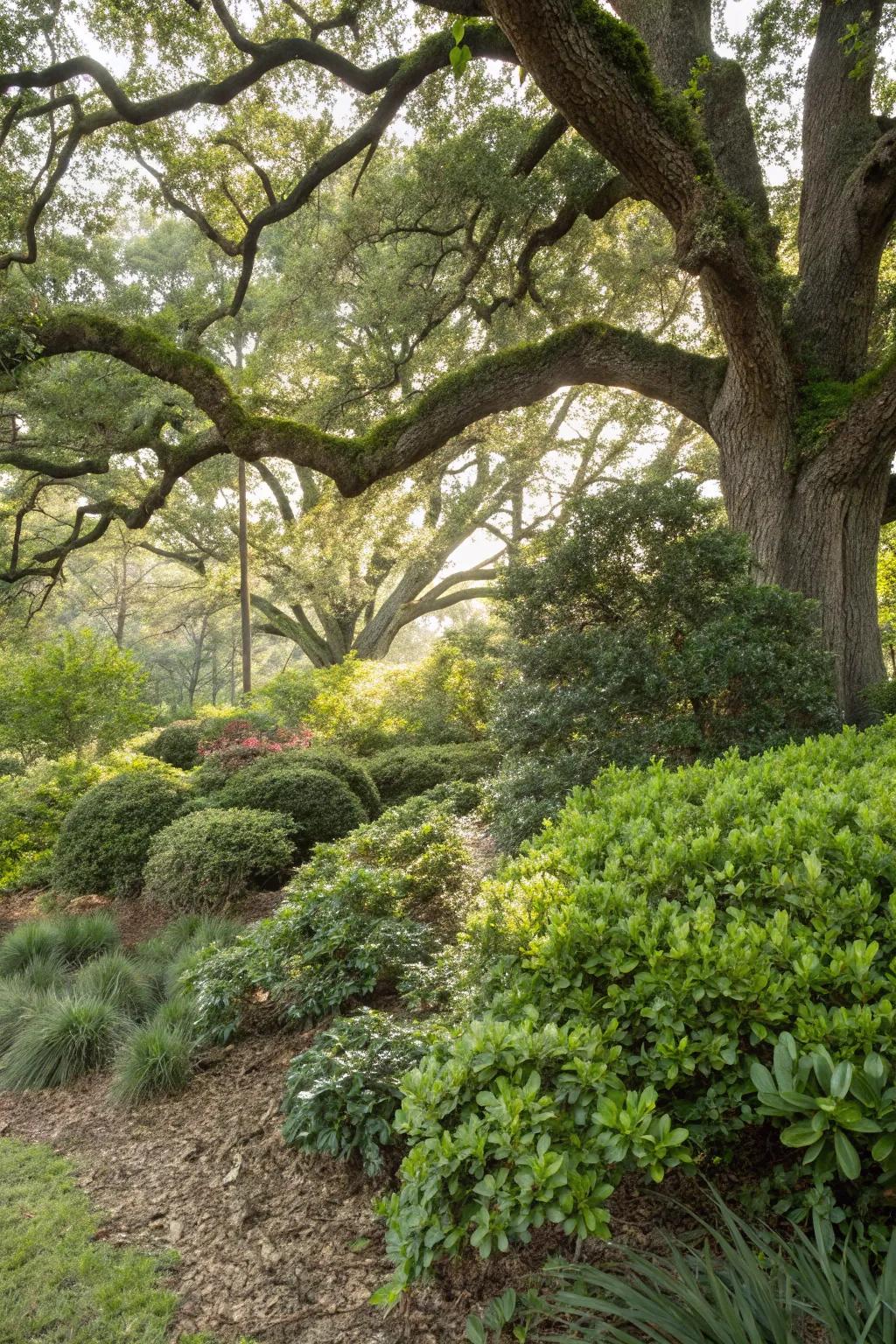
Low-maintenance shrubs like azaleas provide greenery and texture. In my garden, they offer a lush backdrop that complements the oak’s grandeur.
A few choices to try:
- Low-Maintenance Azalea Shrubs: Enhance your garden’s elegance with lush azalea shrubs for a vibrant, textured landscape.
- Evergreen Landscaping Bushes: Transform your yard with evergreen bushes, adding texture and all-year greenery effortlessly.
- Variety Pack of Garden Shrubs: Diversify your garden with a mix of hardy shrubs to create a lush, layered look.
6. Plant a Succulent Collection
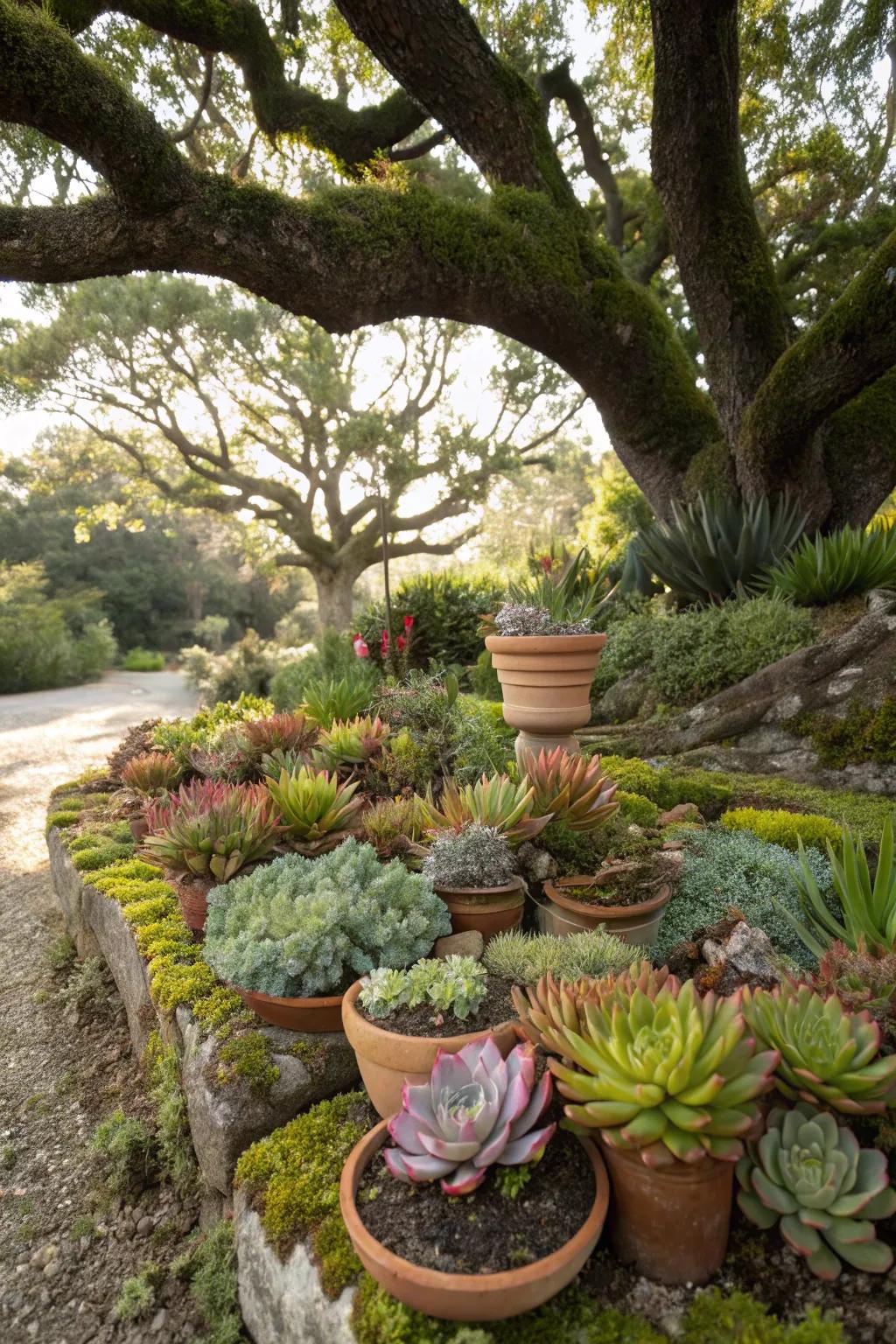
Succulents are surprisingly adaptable and can add a modern twist to your oak’s base. I have a small succulent collection that thrives with little attention.
Give these a look:
- Assorted Succulent Plants Set: Transform your garden’s look instantly with this diverse assortment of easy-care succulent plants.
- Terracotta Planters: Enhance your succulents’ beauty with classic terracotta planters, perfect for any garden setting.
- Cactus and Succulent Potting Mix: Ensure healthy growth with specialized potting mix, ideal for cactus and succulent care.
7. Create a Tranquil Rock Garden
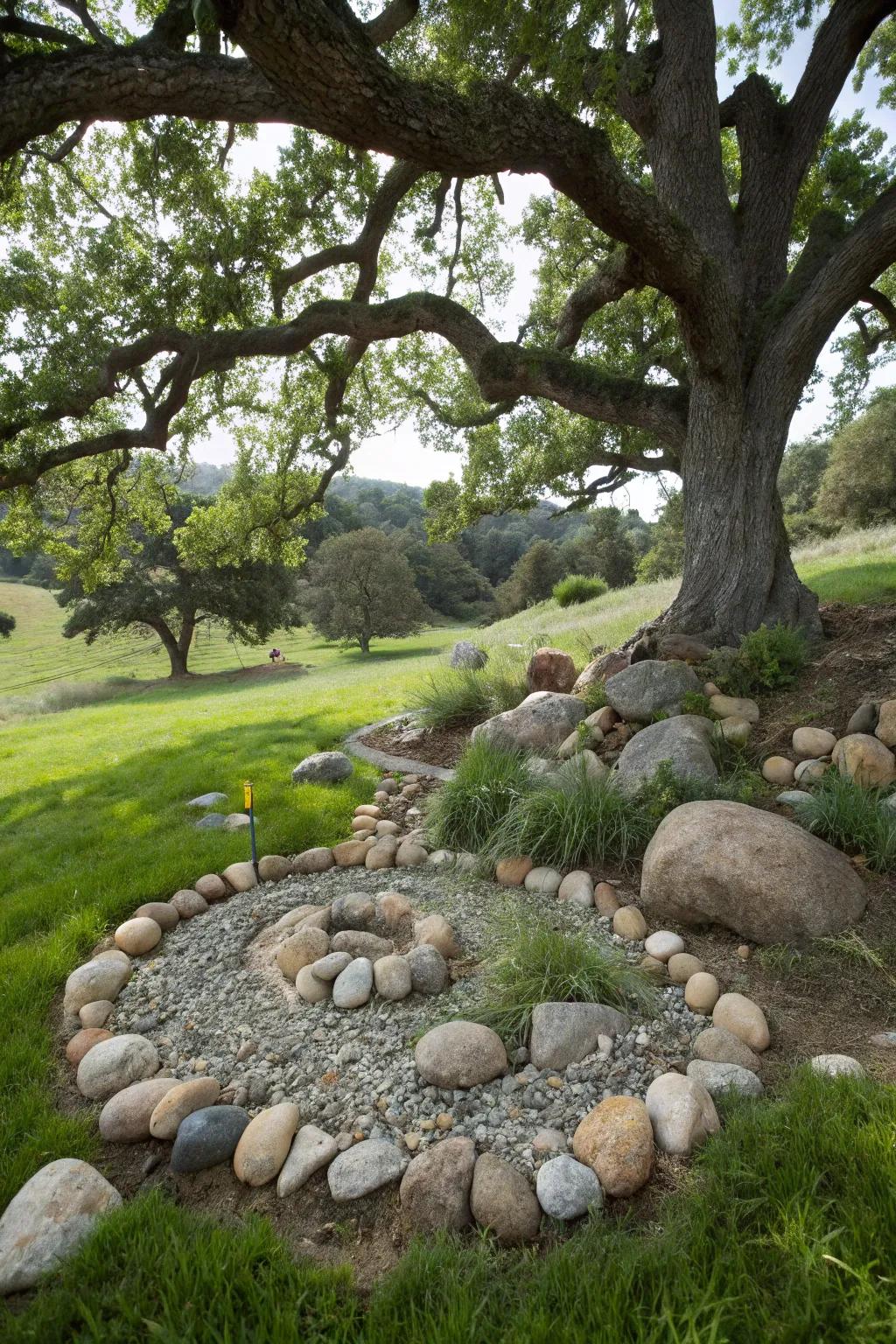
Transform the space under your oak tree into a serene rock garden using various stones and pebbles. I’ve found that this not only adds a rustic charm but also requires minimal upkeep.
A few suggestions:
- Decorative River Rocks: Elevate your rock garden with smooth river stones. Easy to use for a natural look.
- Garden Pebbles and Gravel: Add charm to your garden with premium pebbles that are perfect for pathways and borders.
- Outdoor Solar Garden Lights: Brighten up your rock garden effortlessly with solar lights for eco-friendly illumination.
8. Install Flower Beds with Perennials
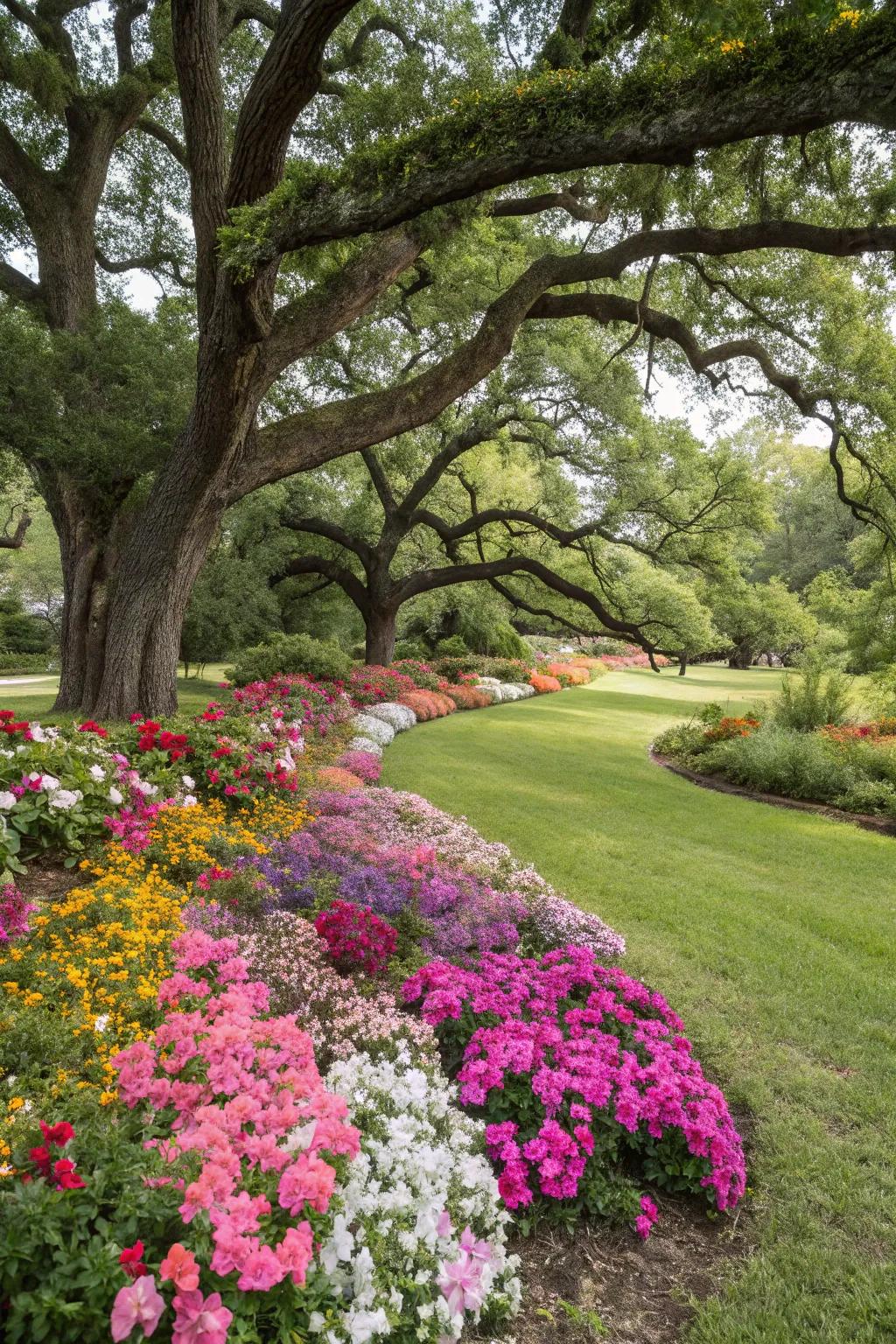
Perennials like hostas and astilbes thrive in the shaded environment under oaks. My own flower beds come alive each season with these low-maintenance blooms.
Explore these options:
- Shade-Loving Perennial Flower Seeds: Enhance your garden with perennials that flourish in shaded areas under oak trees.
- Organic Planting Soil for Flowers: Boost flower growth with nutrient-rich soil designed for shaded environments under trees.
- Decorative Garden Edging: Define your flower beds with elegant edging that complements vibrant perennial blooms.
9. Install a Water Feature
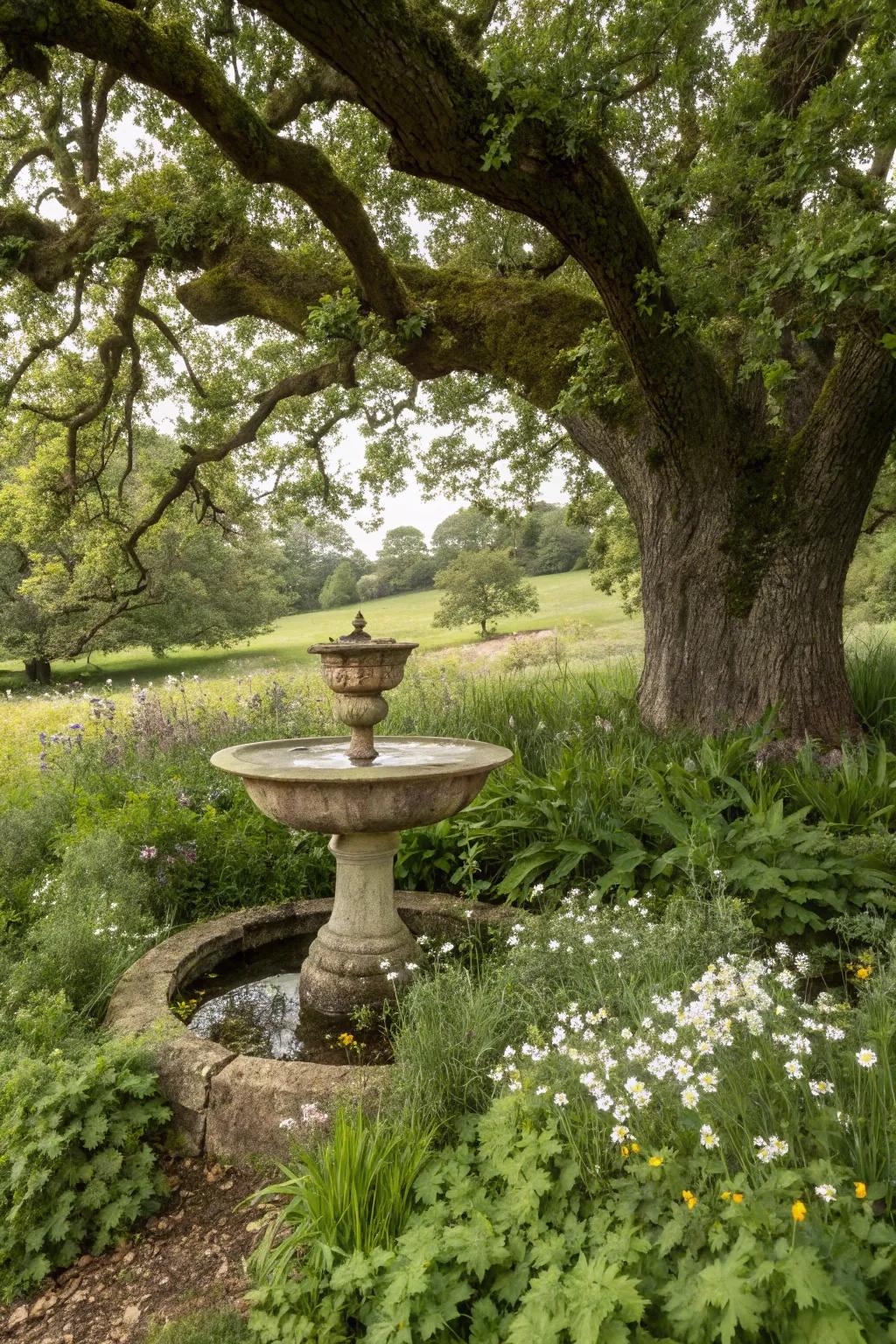
A small fountain or birdbath can add movement and attract wildlife. In my garden, a water feature under the oak brings a soothing sound to the space.
You might give these a try:
- Outdoor Garden Fountain: Enhance your garden’s tranquility with a classic fountain, promoting relaxation and ambiance.
- Decorative Birdbath: Invite charming wildlife to your yard with a stylish, functional birdbath addition.
- Solar Powered Water Pump: Add eco-friendly movement to your fountain with a solar-powered water pump.
10. Define Spaces with Edging and Borders
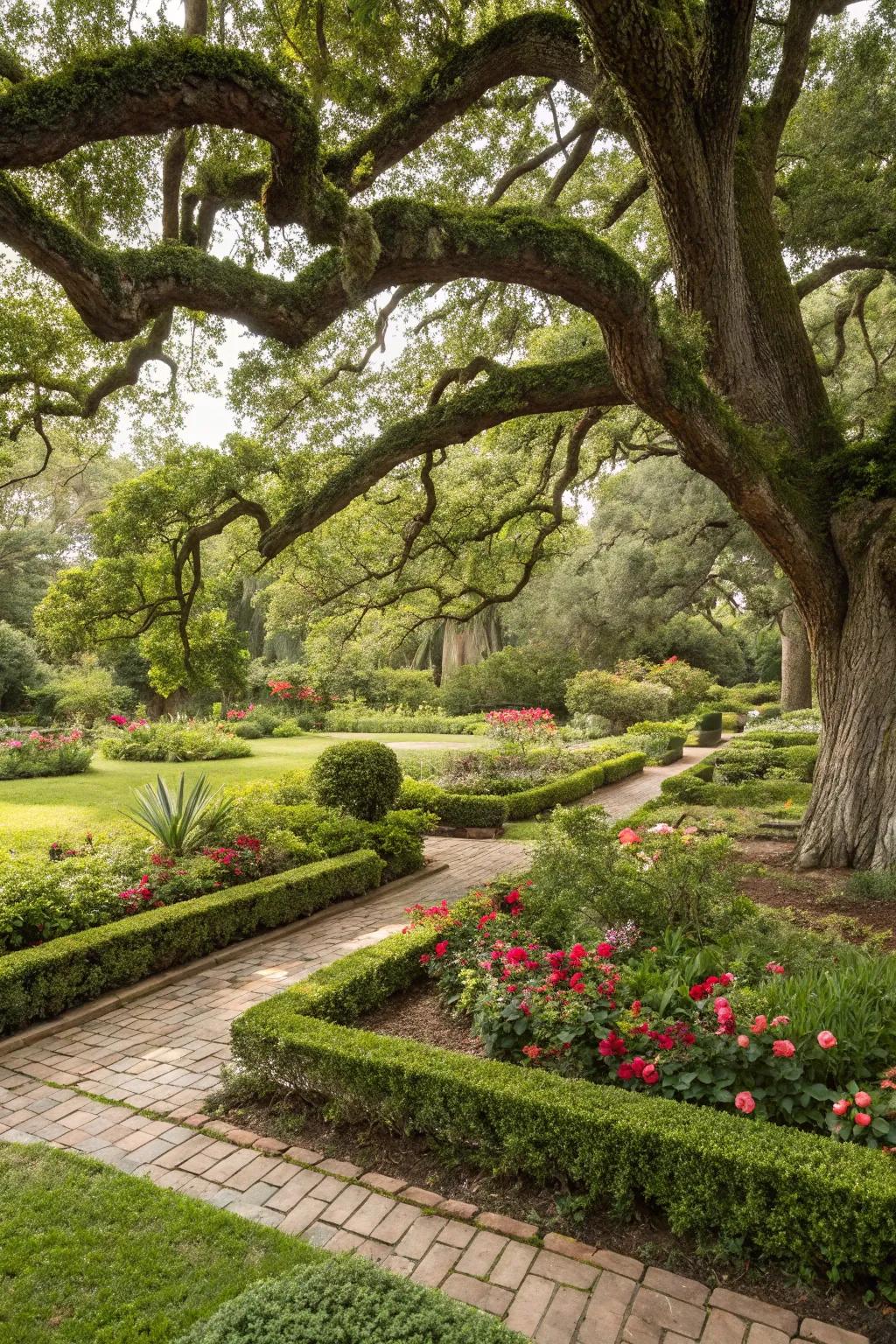
Use natural stone or metal edging to create defined borders around your plantings. This little trick has helped me keep my garden looking neat and organized.
Some handy options:
- Natural Stone Edging: Create elegant garden borders with natural stone; ideal for a classic, timeless look.
- Metal Garden Edging: Use metal edging to add a modern touch and keep your garden neat and organized.
- Flexible Landscape Edging: Flexible edging lets you shape curves easily, helping to define spaces creatively in your garden.
11. Create a Seating Area
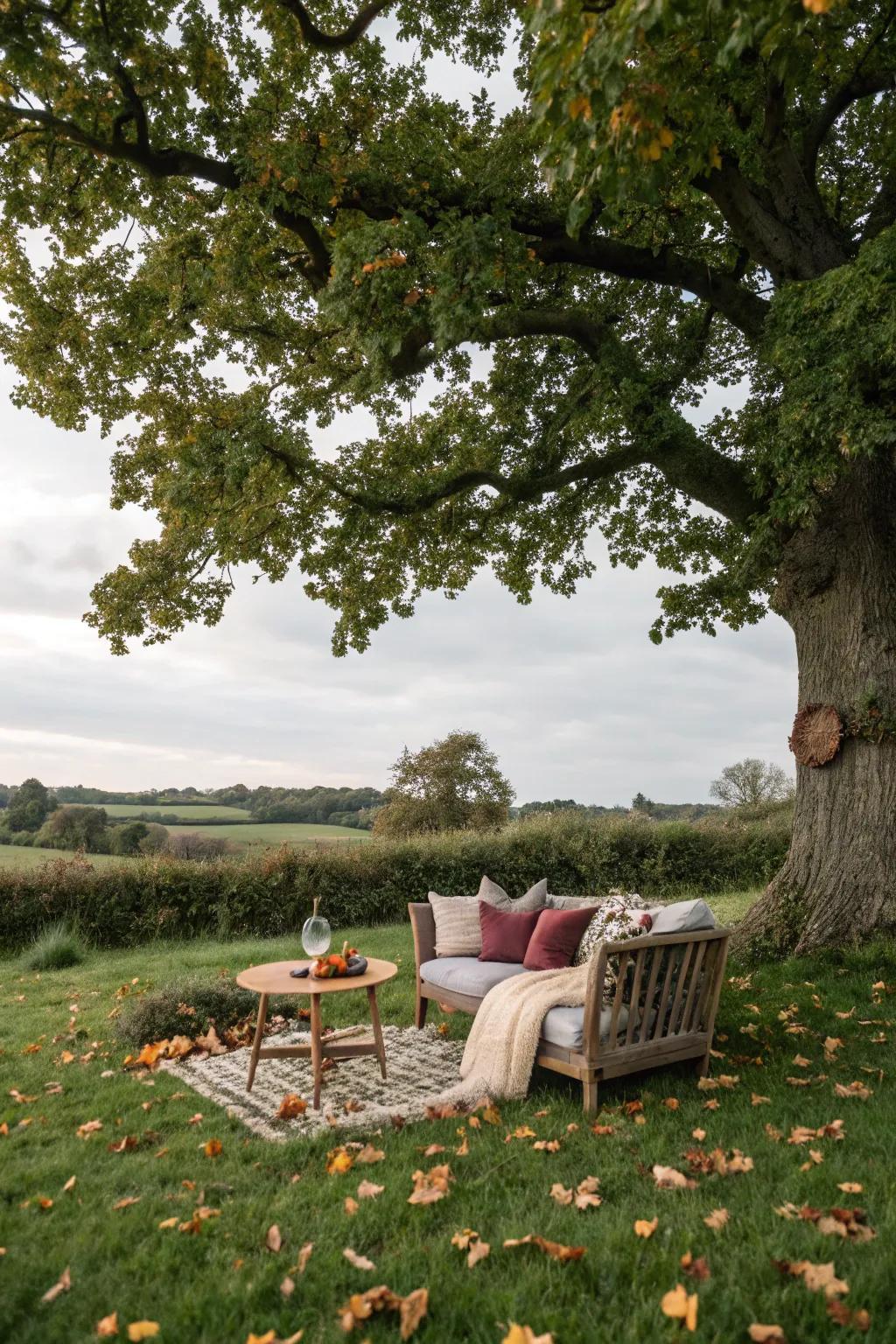
Set up a cozy seating nook to enjoy the oak’s shade. A bench under my oak has become my favorite spot for morning coffee.
Useful items to consider:
- Outdoor Wooden Bench: Enhance your garden with a charming wooden bench, perfect for relaxing under your oak tree.
- Weather-Resistant Outdoor Cushions: Add comfort and style with weather-resistant cushions that complement your cozy seating area outdoors.
- Outdoor Coffee Table: Complete your seating nook with a stylish outdoor coffee table for morning coffee and more.
12. Incorporate Artistic Elements

Add sculptures or artistic pieces to make the space unique. I have a few whimsical statues that add personality to my oak’s landscape.
A few helpful options:
- Outdoor Garden Statue: Enhance your landscape’s charm with a timeless garden statue that adds elegance and character.
- Whimsical Animal Sculpture: Add a touch of whimsy with an animal sculpture to bring playful spirit under your oak tree.
- Artistic Garden Pedestal: Elevate your garden’s style by displaying sculptures on a classic and durable garden pedestal.
13. Design a Mulched Area
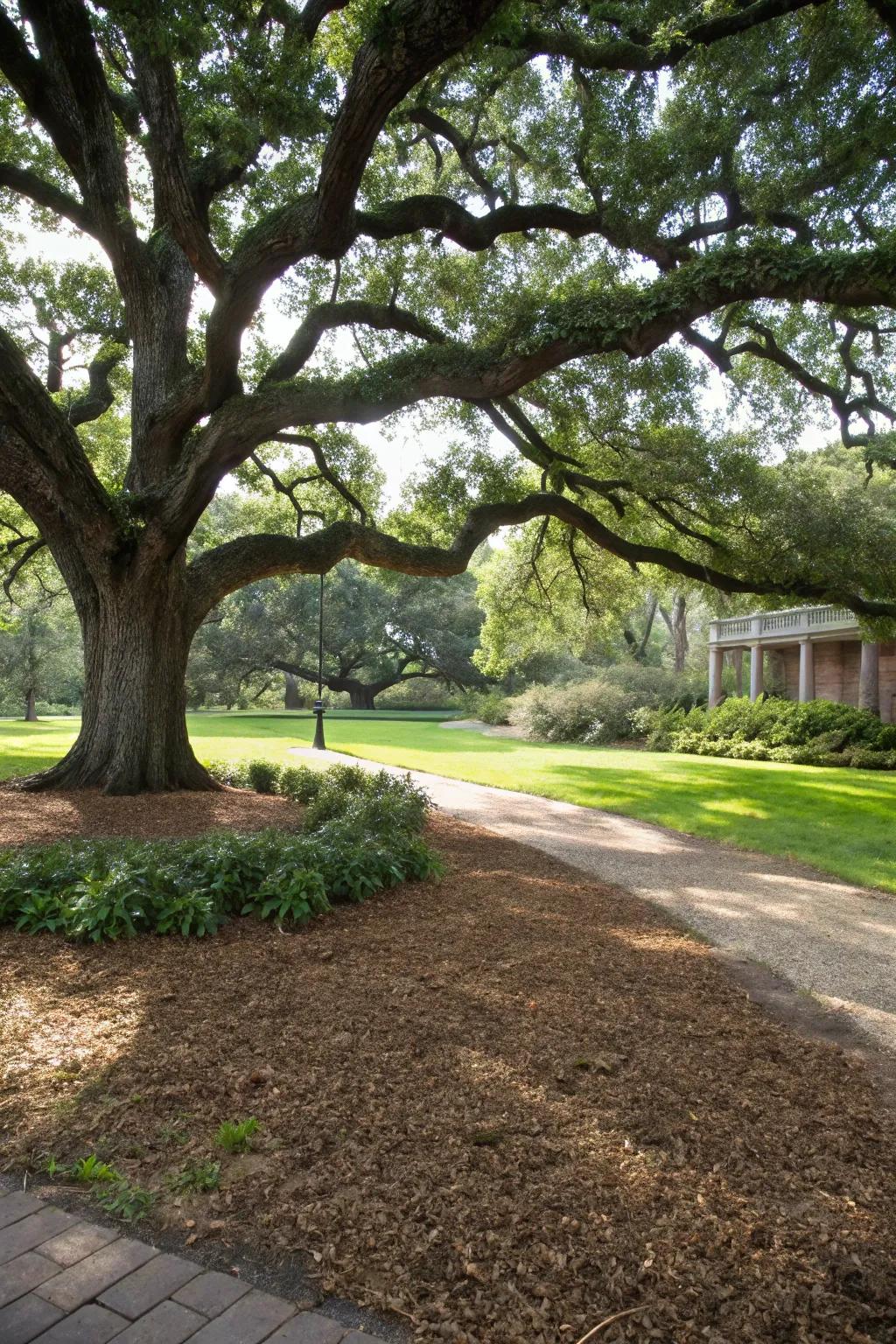
Mulching is a great way to keep the soil moist and discourage weeds under an oak. I’ve used natural mulch to create a tidy, well-maintained look around my oak.
Try these:
- Organic Mulch: Enhance soil health and suppress weeds naturally with organic mulch. Perfect for oak tree areas.
- Garden Edging: Create clean, defined borders with garden edging for a polished look around your oak tree.
- Mulch Fork: Easily apply and spread mulch with a sturdy mulch fork. Simplify your landscaping tasks today.
14. Use Ground Covers for a Carpet-Like Effect
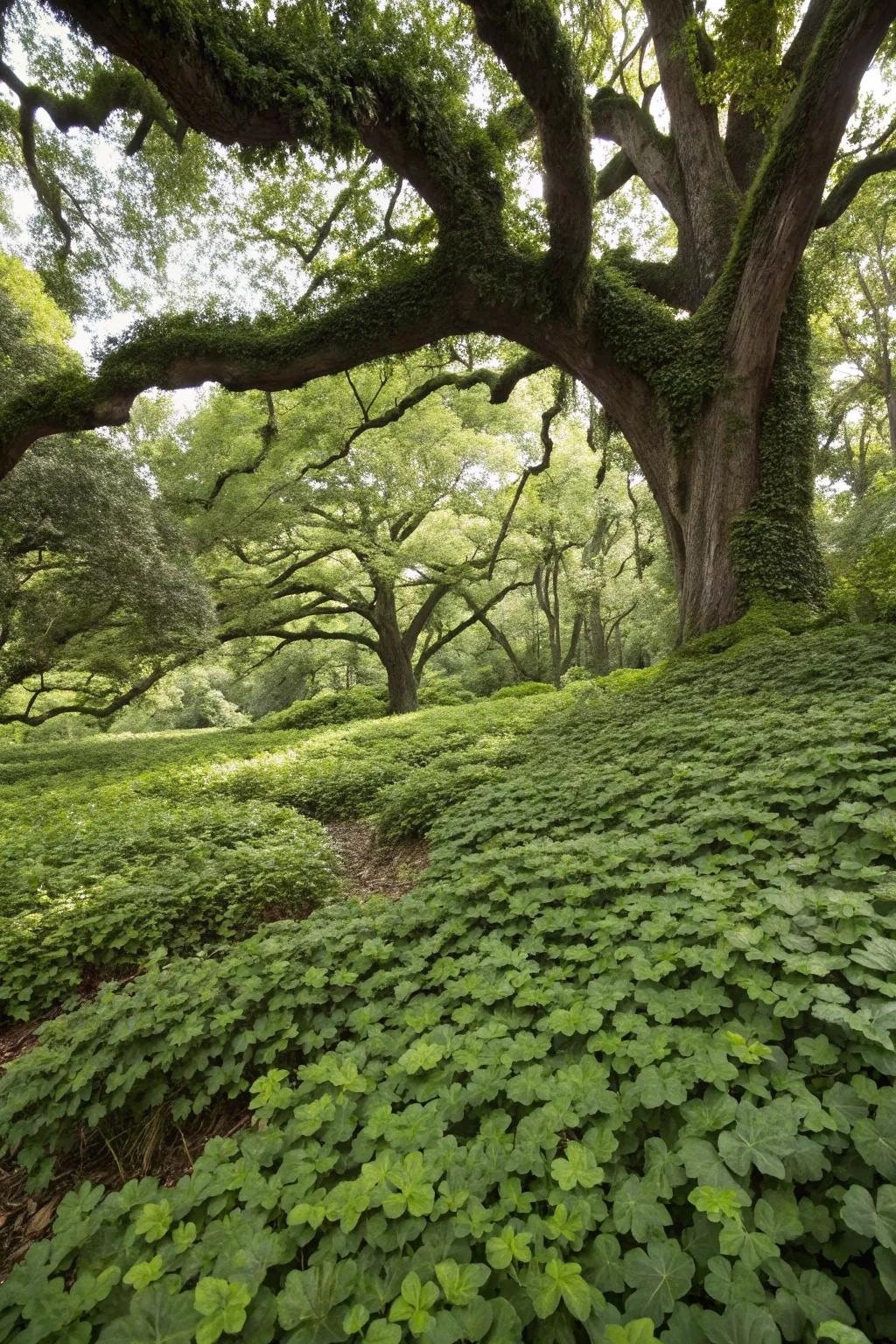
Ground covers like creeping thyme create a lush, green carpet that thrives in the shade. I’ve used them to fill in spaces, adding a soft, inviting touch.
These products might help:
- Creeping Thyme Seeds: Transform your shaded areas with creeping thyme seeds for a lush, carpeted green look.
- Shade Gardening Soil Mix: Enhance your ground cover’s growth with a specialized soil mix perfect for shaded areas.
- Drip Irrigation Kit: Ensure consistent watering and growth of your ground covers with a smart drip irrigation kit.
15. Maintain a Defined Lawn Edge
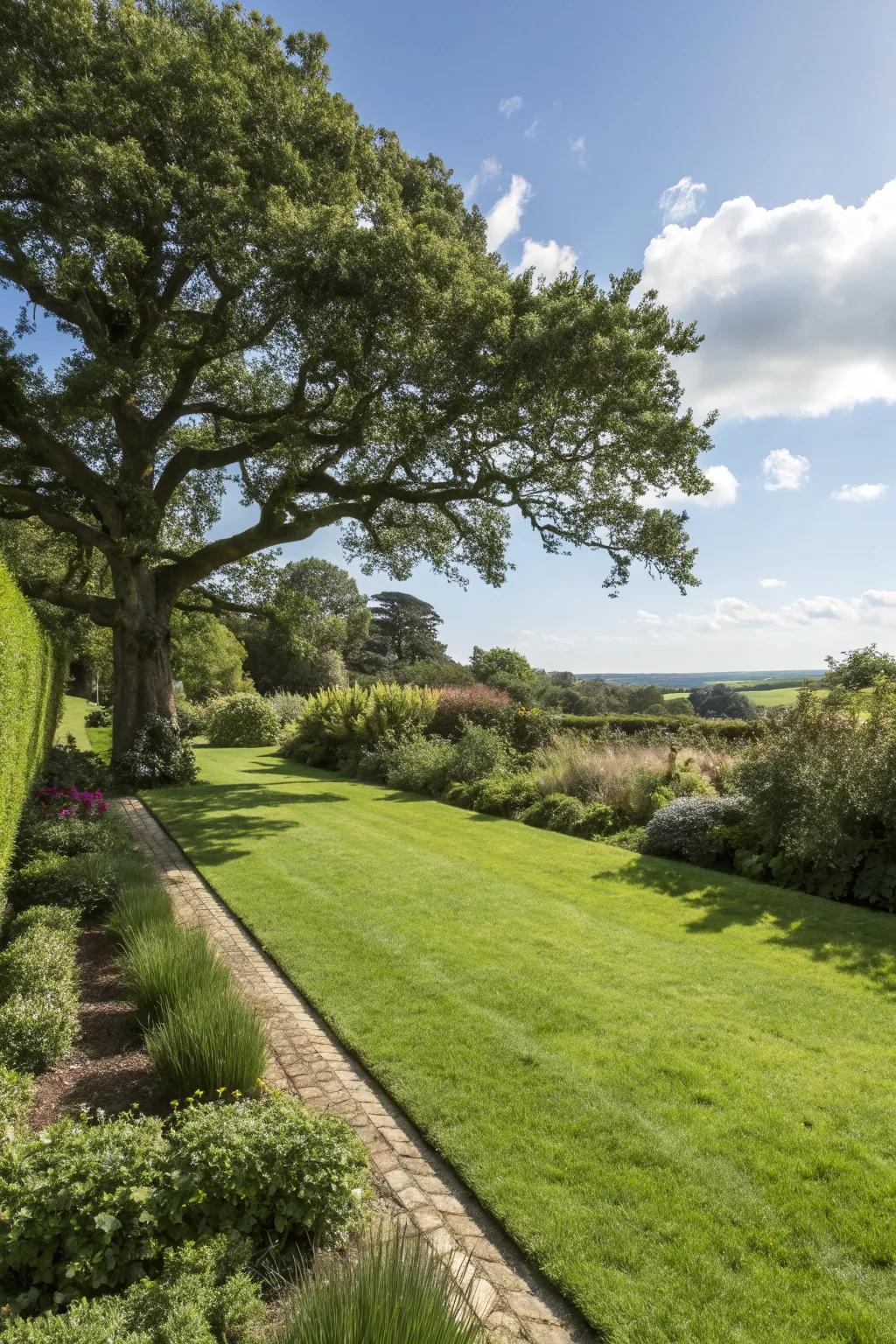
Keep a clear separation between the lawn and the oak’s landscaping with a defined edge. This simple trick keeps my yard looking crisp and well-kept.
A few relevant products:
- Garden Lawn Edging Barrier: Enhance your landscaping with durable edging; keep your garden borders neat and distinct.
- Manual Edger Tool: Easily create crisp edges between your lawn and garden; invest in a reliable manual edger.
- Decorative Stone Edging: Add elegance to your lawn with decorative stone edging; keep garden borders visually appealing.
16. Plant Shade-Tolerant Ferns
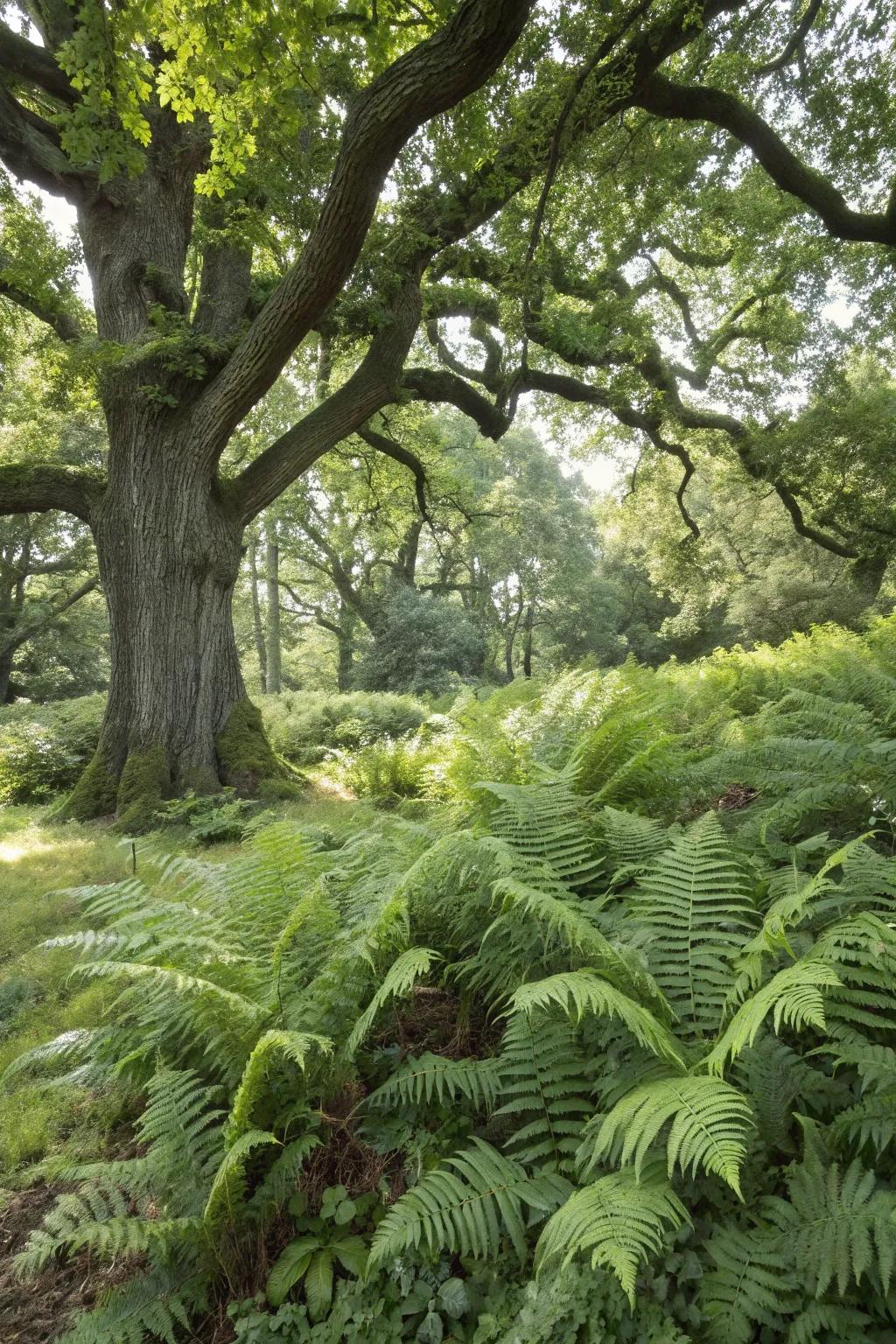
Ferns like the Brilliance Autumn Fern thrive in shade and add lush greenery to your landscape. In my Austin garden, these ferns have brought a lovely texture to the shaded areas.
Items that may come in handy:
- Shade-Tolerant Fern Plant Packs: Add lush greenery to your garden with easy-to-grow shade-tolerant fern packs.
- Organic Soil Mix for Ferns: Enhance fern growth with this nutrient-rich, organic soil mix specially formulated for shade-loving plants.
- Outdoor Garden Plant Sprayer: Maintain healthy ferns with a convenient plant sprayer for efficient watering and misting.
17. Use Ornamental Grasses
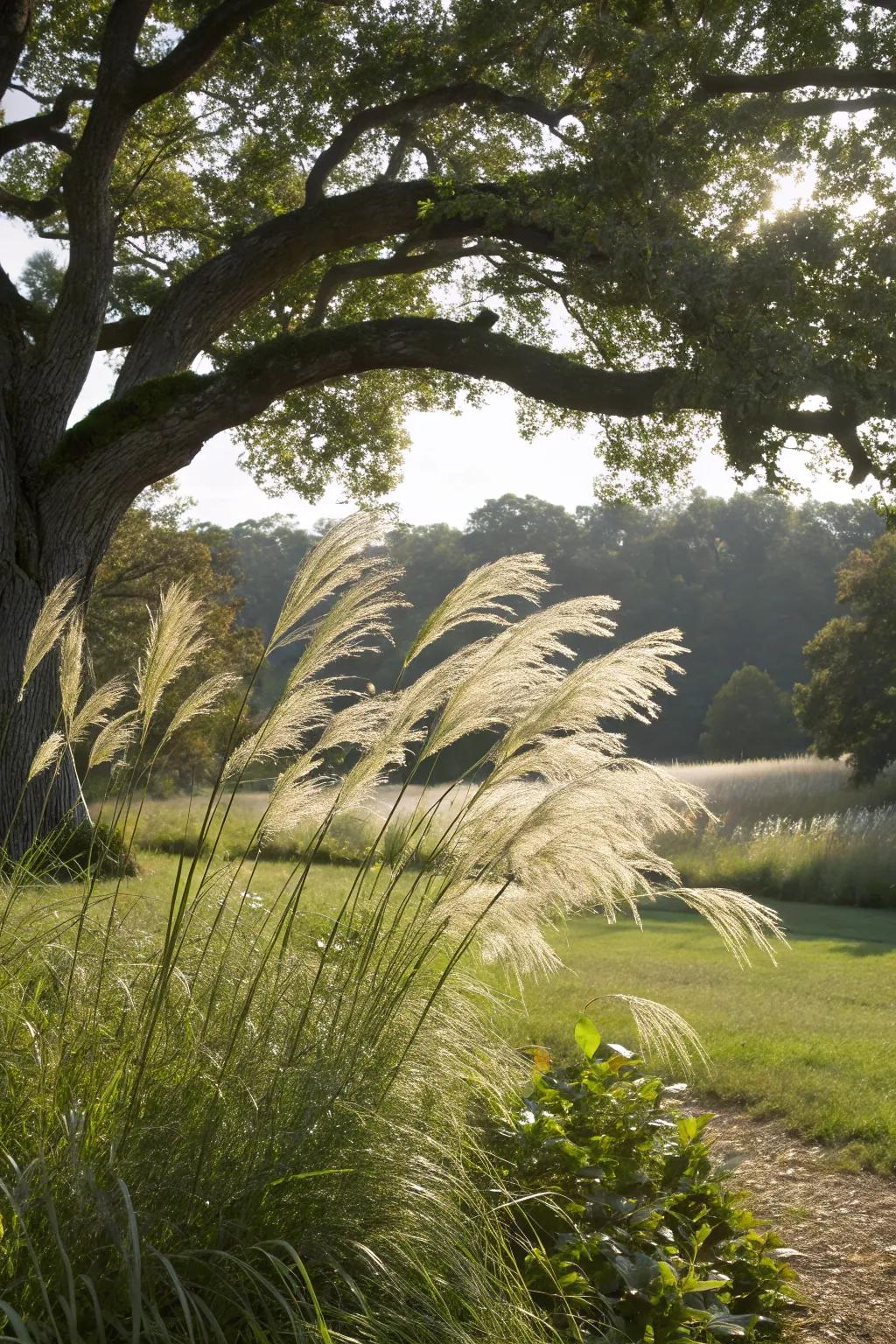
Ornamental grasses sway gracefully in the breeze and require little water. They add height and movement under my oak, creating a dynamic scene.
Possibly helpful picks:
- Drought-Tolerant Ornamental Grass Seeds: Enhance your landscape’s beauty with easy-to-grow ornamental grass seeds. Perfect for low-maintenance gardening.
- Self-Watering Planters: Keep your ornamental grasses thriving with hassle-free self-watering planters ideal for sunny spots.
- Organic Mulch: Protect your grass roots while enhancing soil moisture with natural, organic mulch for healthy growth.
18. Focus on a Natural Look
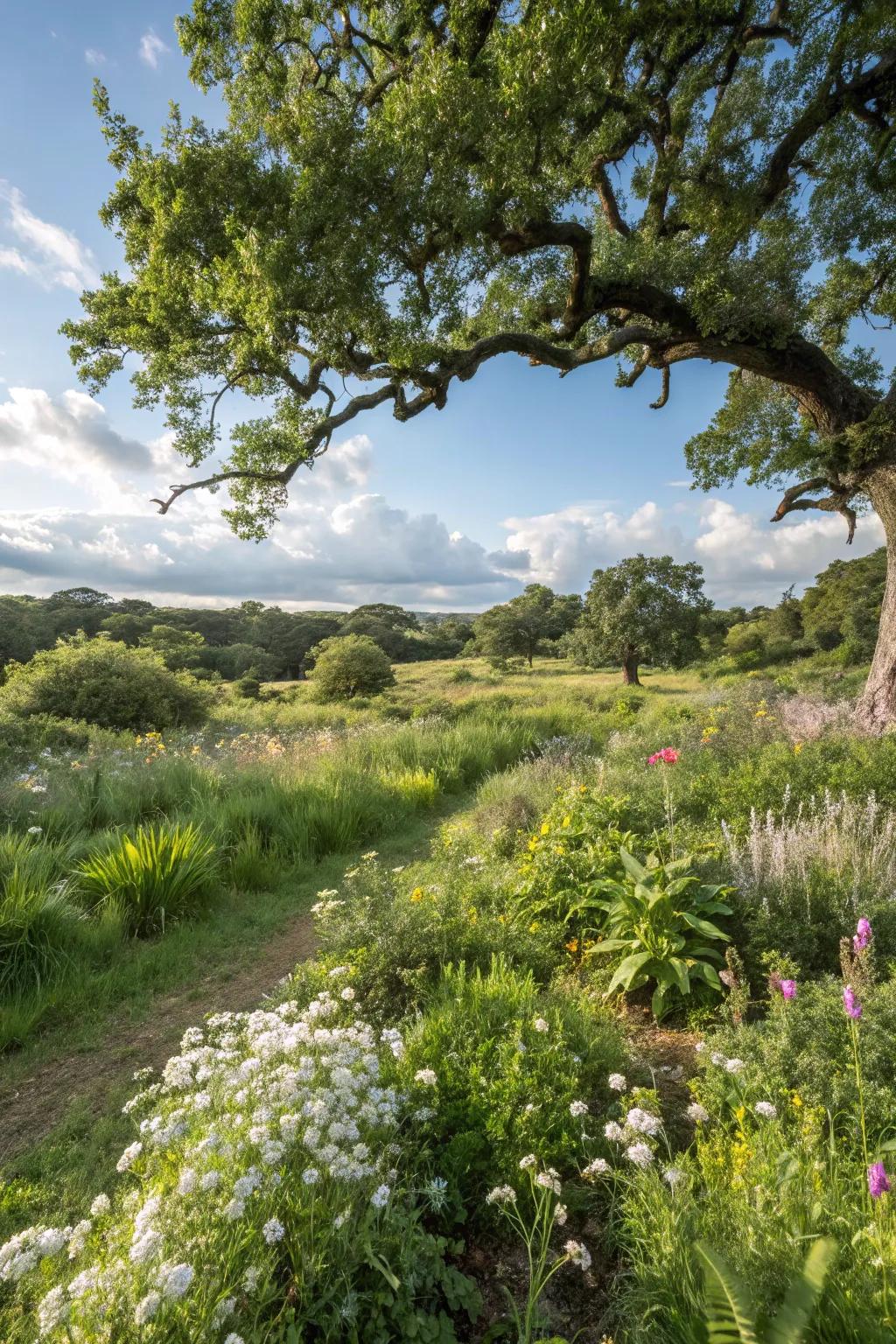
Emphasize the oak’s natural beauty by using native plants and materials. My garden under the oak feels like an extension of the wild, which I absolutely love.
Check if these fit your needs:
- Native Plant Seed Mix: Create a natural oasis by planting native seeds that thrive under oak canopies effortlessly.
- Mulch for Oak Trees: Preserve moisture naturally with mulch that complements the aesthetic of your oak tree landscape.
- Natural Stone Pathway Kit: Enhance garden paths using natural stone to seamlessly blend with the surrounding wilderness.
19. Create a Wildflower Patch
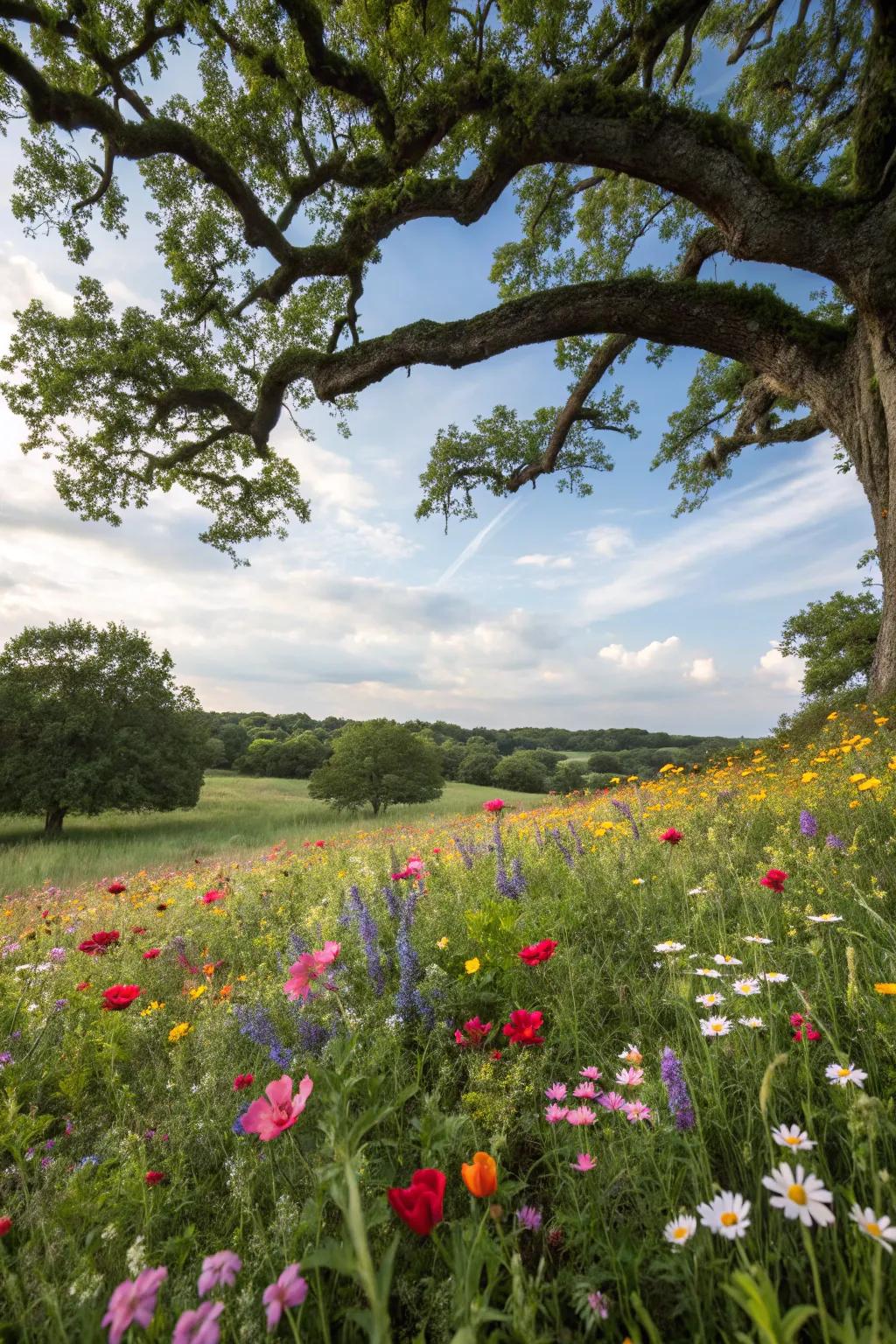
Scatter wildflower seeds for a burst of seasonal color. In my garden, a patch of wildflowers brings bees and butterflies to the oak’s shade.
Some ideas to consider:
- Wildflower Seed Mix: Attract bees and butterflies by planting vibrant wildflowers in your garden with this seed mix.
- Garden Soil Enhancer: Boost your soil’s fertility for thriving wildflowers under the shady oak tree canopy.
- Watering Can with Shower Head: Ensure even water distribution over your wildflower patch for optimal growth and color.
